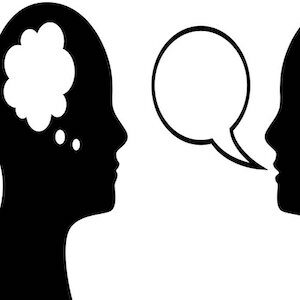By Dr. Ken Broda Bahm:

A seasoned trial lawyer stands in front of the jury, previews the critical argument, and then, making knowing eye contact with the jury, adds, “Now, you might be thinking…” before spelling out and then responding to a key point of expected resistance. That approach — anticipating and reacting to likely responses from your target audience — is an approach that works. I recently completed a focus group with an attorney who used that approach over and over again, wrapping his arguments around the predicted thought processes of the jury, and the focus group participants ate it up. One mock juror commented that she really liked this attorney, “because he answered the questions as we were thinking them….” Another added, “he spoke at the speed of my thinking.”
This highly engaging style is likely not fully conscious, but is instead a long-term rhetorical habit on the attorney’s part. The habit is to perceptually put yourself in the shoes of those hearing this story for the first time, and build a moment-to-moment response to what they might be thinking. It means using phrases like,
When you hear that, your reaction might be…
One question that this brings up is….
So the next piece that you might be waiting for is…
There is a good chance you are wondering….
Of course, you won’t always be absolutely correct about what your audience is thinking, but including them in your reasoning helps anyway because it sets up a more dialogic and conversational relationship. In this post, I will share some of the reasons and considerations in generally including the jury’s thoughts in your advocacy.
There’s a Power in Simply Saying “You…”
One of the most basic reasons that the strategy works is simply because it acknowledges and speaks to the audience. Instead of simply making a static argument and putting it in front of a presumably passive audience, you are explicitly identifying and engaging with your audience. That solicits them to be an active participant, and it earns respect. It subtly transforms the relationship from you reasoning at the audience to you reasoning with the audience.
There’s a Power in Enacting the Dialogue
Except during attorney-conducted voir dire, the jurors aren’t actually talking with you. But even during the remaining one-way communication portions of the trial, a rhetorical style that invokes their responses can go a long way in reenacting what that dialogue would be if they were able to speak. If you, as the presenting attorney, think about and adapt to those responses, you can create the feeling that you’re thinking it through with them. That conversational approach is far more likely to lead to persuasion, for the same reasons a Socratic dialogue is going to have a greater chance of influence than a straight listing of reasons.
There’s a Power in Testing It Out
Of course, you might be thinking (see what I did there?), “but I don’t actually know what jurors are thinking.” And that is correct. But while you don’t have perfect telepathic abilities, I think you can make some reasonable predictions about the ways a fresh audience is likely to understand and respond to your arguments. And the beauty is that when you don’t know, you can test it out. That is a major benefit of talking to jurors during a focus group — give them a bit of your case, ask them for their immediate reactions, and then adapt to those reactions. That is a great way of developing a more sensitive and reactive style with jurors.
There’s a Power Even if You’re Wrong
Of course, even after reasonably predicting and even testing what they’re thinking, you could be wrong. You might wonder, if I do toss out a negative thought that they didn’t yet have in mind, did I just hurt my case? Conceivably, I suppose, but I think probably not. There is a good chance that this reaction would only come up later, perhaps when the other side is persuading them. Introducing and responding to the reasonable reaction is like an inoculation against that argument down the road. It still engages and still fosters the feeling that jurors are in conversation with you.
There’s a Danger if You Aren’t Respectful Enough
One final caveat is that this is a strategy that proceeds from respect. If you are one of those rare trial attorneys who feel that jurors are commonly unintelligent and disengaged (I once heard a lawyer refer to jurors as “bales of hay”), then this is not the strategy for you. If even a little disrespect leaks into your “you might be thinking…” statements, then you are better off not making them. For example,
I know you’re thinking that this is just legal gobbledegook, and you can’t make heads or tails of it, but….
That could be true, but the risk in conveying this second persona in the form of your view of the jury is simply too great.
If you already use this strategy, use it more. If you don’t already use this, think about dedicating your next presentation opportunity in front of a jury as a chance to develop a more dialogic style by anticipating and answering their thoughts. It works.
___________________
Other Posts on Adaptation:
- Speak to Familiarity: Jurors Know What They Like, and Like What They Know
- Appreciate the Nuance: Persuasion Isn’t Dead (Yet)
- Meet Your Skeptics Where They Live